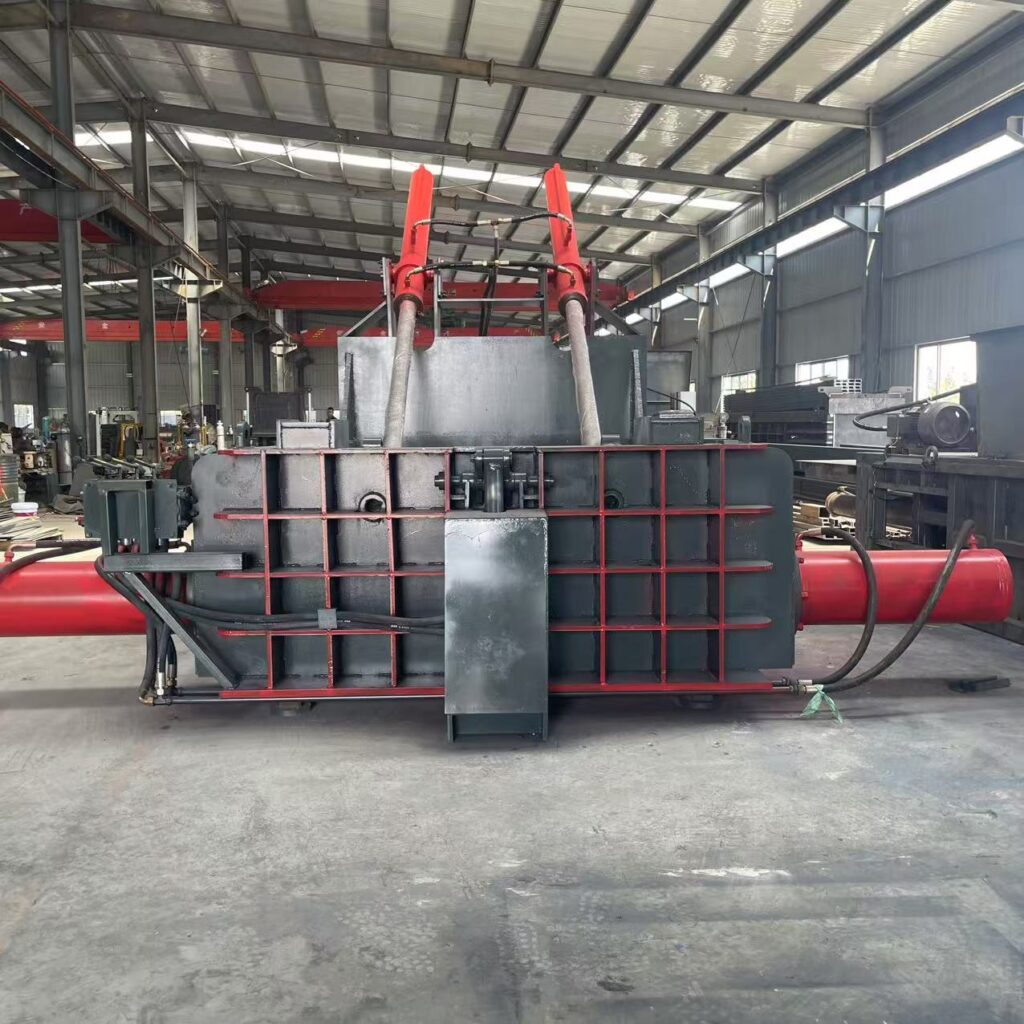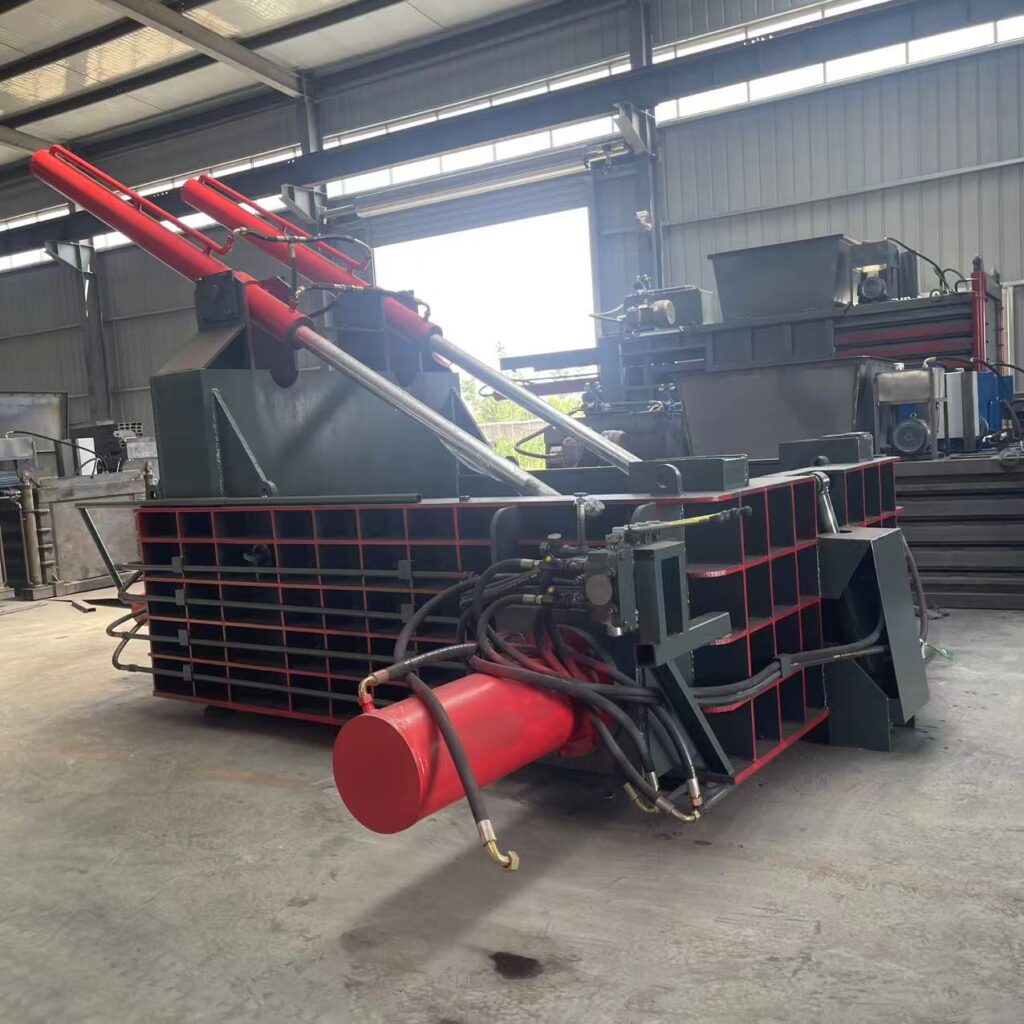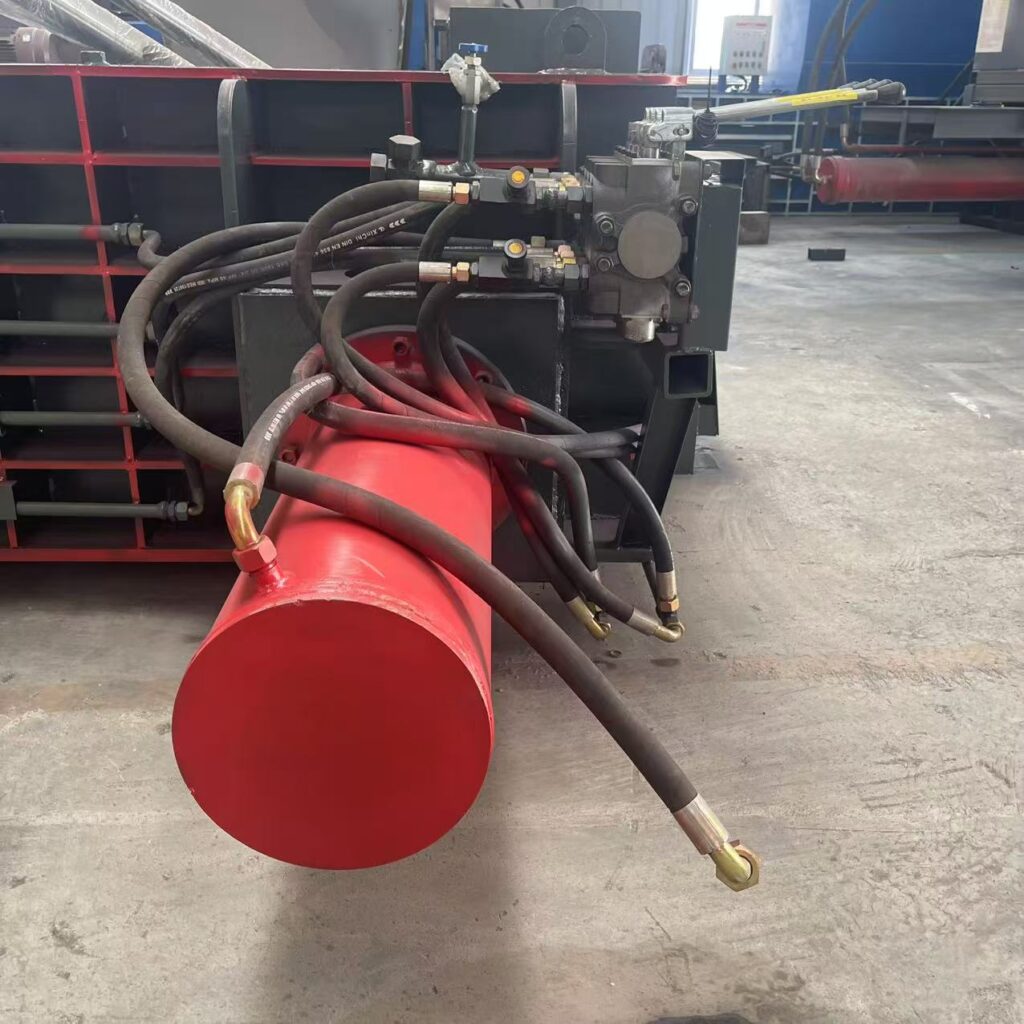What Is A Horizontal Metal Baler Machine?

A horizontal metal baler machine is specialized recycling equipment designed to compress scrap metals into dense, manageable bales. It works with hydraulic pressure to squeeze light or bulky scrap into compact shapes. The machine is typically installed horizontally, allowing continuous feeding and high output.
Unlike vertical balers, which handle smaller volumes, horizontal balers are built for heavy-duty recycling yards, metal processing plants, and large industrial applications. They can process a wide range of scrap including aluminum, steel, copper, stainless steel, and mixed light metals.
By using a horizontal baler, companies achieve improved storage efficiency, reduced transportation costs, and enhanced recycling value for scrap metal.
Why Is A Horizontal Metal Baler Important?

Efficient Scrap Management
Handling uncompressed scrap metal can be challenging due to its irregular shapes and large volume. A horizontal baler reduces these challenges by compressing material into neat bales, making handling easier.
Cost Savings In Transportation
Compact bales take up significantly less space during storage and transport. This leads to fewer trips, lower fuel costs, and optimized logistics.
Higher Recycling Value
Buyers prefer compact bales because they are uniform and easy to melt in furnaces. Well-compressed bales from a horizontal baler usually sell at a higher market price.
Environmental Benefits
Balers contribute to sustainable waste management by promoting recycling, reducing landfill usage, and lowering carbon footprints.
Industrial Reliability
For businesses handling tons of scrap daily, a horizontal baler ensures consistent processing speed, higher safety, and long-term durability.
How Does A Horizontal Metal Baler Work?

Step 1: Feeding
Scrap metal is loaded into the baler’s feeding chamber. This can be done manually, with a conveyor, or via a crane or grab machine.
Step 2: Hydraulic Compression
A hydraulic cylinder pushes the metal into a compression chamber, applying immense force to reduce its volume.
Step 3: Side Or Front Ejection
Once compressed, the finished bale is automatically ejected from the side or front, depending on machine design.
Step 4: Bale Binding (Optional)
Some machines offer an automatic strapping or binding system to tie bales with steel wires for secure transportation.
Step 5: Continuous Operation
Horizontal balers allow continuous feeding, making them highly efficient compared to vertical models.
Main Applications Of Horizontal Metal Balers
-
Scrap Yards: Processing mixed metal waste quickly and efficiently.
-
Metal Recycling Plants: Converting large quantities of non-ferrous and ferrous metals into furnace-ready bales.
-
Manufacturing Industries: Handling production waste such as steel cuttings, aluminum sheets, and copper wires.
-
Automobile Recycling: Compressing car body parts, engine blocks, and other vehicle scrap.
-
Steel Mills And Foundries: Preparing raw material for smelting operations.
How To Use A Horizontal Metal Baler Machine
1. Prepare The Machine
-
Ensure hydraulic oil levels are sufficient.
-
Inspect the compression chamber for debris or obstacles.
-
Check electrical systems and safety controls.
2. Load The Scrap
-
Place scrap into the feeding chamber using a conveyor or grabber.
-
Avoid overloading to prevent hydraulic strain.
3. Start The Compression Cycle
-
Operate the control panel to activate hydraulic compression.
-
The cylinder will push material into the main chamber.
4. Bale Ejection
-
After compression, the bale is pushed out through the side or front.
-
Automatic eject systems improve speed and reduce labor.
5. Collect And Store Bales
-
Finished bales should be stacked neatly for storage or transportation.
-
If strapping is required, use steel wire for strong binding.
Advantages Of Using Horizontal Metal Balers
-
High Efficiency: Continuous feeding allows faster operation than vertical balers.
-
Strong Compression: Hydraulic pressure ensures maximum density.
-
Large Capacity: Handles tons of scrap per day.
-
Automation Options: Semi-automatic or fully automatic systems available.
-
Durability: Built with wear-resistant steel and reliable hydraulic systems.
-
Safety: Equipped with emergency stops, safety locks, and overload protection.
Guide To Choosing The Right Horizontal Metal Baler
1. Consider Processing Capacity
Estimate the daily or hourly volume of scrap to determine the right size. Small yards may require 30–50 tons of pressure, while large recyclers may need 200–300 tons.
2. Identify The Type Of Scrap
Different metals require different compression forces. Light aluminum cans need less pressure, while steel sheets and heavy copper need stronger force.
3. Choose The Ejection Method
-
Side Ejection: Best for heavy, long bales.
-
Front Ejection: Suitable for general scrap processing.
4. Check Automation Level
-
Semi-Automatic: Requires manual feeding and binding.
-
Fully Automatic: Offers conveyor feeding, automatic compression, and auto-strapping.
5. Evaluate Machine Size And Installation
Ensure the baler fits within available workshop space. Consider installation requirements such as pit depth, electrical power, and foundation strength.
6. Review Maintenance And After-Sales Support
Look for machines with accessible hydraulic systems, simple oil change options, and reliable manufacturer support.
7. Budget And ROI
Balance initial investment with long-term savings in labor, transport, and scrap sales. A high-quality machine often pays for itself within months.
Safety Tips For Operating Horizontal Metal Balers
-
Train operators before use.
-
Wear protective equipment such as gloves, helmets, and safety boots.
-
Never insert hands or tools into the compression chamber.
-
Regularly check hydraulic hoses and seals for leaks.
-
Use emergency stop buttons in case of malfunction.
-
Keep the working area clear of unauthorized personnel.
Future Trends Of Horizontal Metal Balers
-
Smart Automation: AI-controlled feeding and compression for higher efficiency.
-
Energy-Saving Hydraulics: Eco-friendly systems with lower power consumption.
-
Stronger Materials: Improved wear-resistant alloys for longer service life.
-
IoT Connectivity: Real-time performance monitoring and predictive maintenance.
-
Compact Design: Machines that save space but deliver high power.
Real-World Case Example Of Horizontal Metal Baler Use
A large recycling company in Southeast Asia faced major challenges with handling thousands of tons of mixed metal scrap each month. Before investing in a horizontal baler, the yard was filled with bulky and irregular scrap that consumed excessive storage space and required high transportation costs.
After installing a 200-ton horizontal metal baler with side ejection, the company achieved remarkable improvements. Scrap was compressed into uniform bales, reducing volume by nearly 70%. This allowed the company to store more material in the same space, cut truck trips by half, and sell bales at higher prices due to their consistent quality.
Additionally, labor efficiency improved since workers no longer needed to manually organize scrap. The machine’s semi-automatic feeding system streamlined operations, while safety controls minimized risks. Within the first year, the baler paid back its investment through savings in logistics and increased scrap revenue.
This example shows how a horizontal metal baler is not only a machine but also a powerful business solution that boosts profitability and supports sustainable recycling practices.
Conclusion
A horizontal metal baler machine is essential equipment for recycling industries, providing efficiency, cost savings, and environmental benefits. It compresses bulky scrap metals into dense, manageable bales that are easy to store, transport, and recycle.
When choosing a baler, businesses must consider capacity, scrap type, ejection method, automation level, and budget. With the right machine, companies can increase recycling profits, reduce logistics costs, and contribute to sustainable resource management.
Investing in a horizontal metal baler is not just a practical decision—it is a long-term step toward operational excellence and environmental responsibility.
